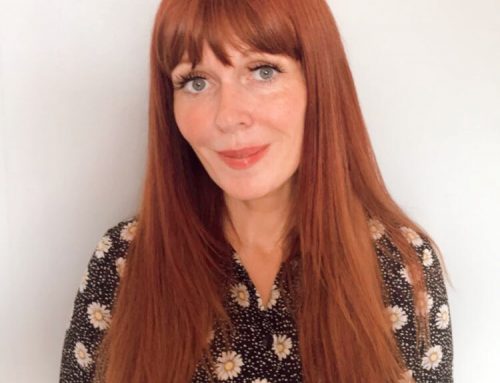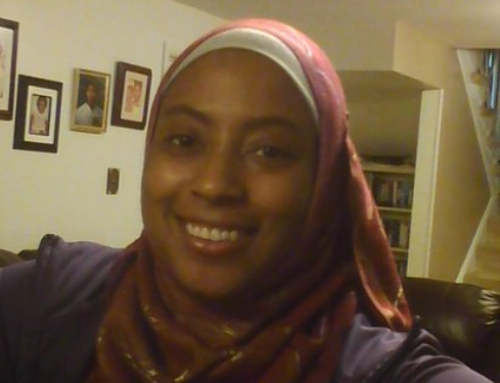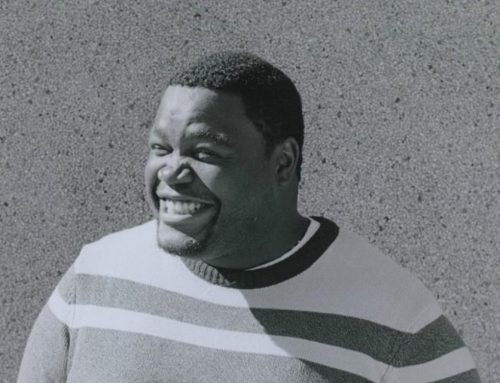My daughter saved my life when I was 15.
The thread was cobalt blue, and after I finished, I admired my work. At only thirteen, my embroidery was sloppy, but pride still swirled in my gut. The pride stemmed from accomplishment and mastery. Not a mastery of sewing skills, but as I stitched the letters into the bottom of my foot, I had full control over my pain. Self-mutilation is seen frequently in adolescents suffering from PTSD.
I endured undiagnosed PTSD for most of my life. It’s a condition my brain first picked up after a severe burn when I was only two years old. It’s not the burn that caused PTSD, but it was the care of the burn in the weeks that followed. Twice daily, my wound had to be scoured until it bled. The excruciating pain made the experience traumatic. My two-year-old mind only saw torture. Three decades later, the physical scars are barely noticeable, but the experience left an indelible mark on my brain that affected my life dramatically.
In the early 1980’s, doctors didn’t believe the effects of trauma lingered in children so young. PTSD was an adult condition, not diagnosed in kids. In fact, doctors assured my parents I wouldn’t remember anything. And that’s true, I remember almost nothing. But what medicine didn’t realize then, is that trauma actually alters the brain. The physiological effects of PTSD remained whether I remembered the incident or not.
Growing up in a suburban home, my devoted parents assumed I was just a clingy, quiet, and odd little kid who was sick often, dreaded school, and was a bit of a loner. When I entered adolescence, my brain went haywire. That’s expected in teenage development. Teenagers have a comparatively high amount of excitability neurotransmitters in their brains. Most teens already have poor impulse control, anxiety, and mood swings – layering PTSD on top of adolescent angst can be dangerous. When adolescence hit, a tsunami of teenage rebellion washed over my life. Intrusive thoughts and poor impulse control became debilitating.
I discovered alcohol at thirteen and loved it. Drinking drowned out my internal anxiety – alcohol could muffle the constant thoughts that wouldn’t slow on their own. Fortunately, I didn’t have access to much alcohol. That probably saved me from alcoholism, but still, I searched for other ways to alter my mind. Friends told me to try cold medicine to get high. In the 1990’s, I could pick up a pocket full of pills at the pharmacy without ID. When I was intoxicated, I became a different person. I felt vibrant and alive – my haunting unease dissipated. I ached to experiment with anything that could make me feel alive.
It doesn’t matter how perfect one’s life might seem, everyone is at risk for PTSD and it can happen at any moment. One of the worst parts is that no one realizes they suffer from this condition until well after the trauma has passed – millions remain undiagnosed. As a teenager, I desperately needed treatment, but I didn’t realize it. I’d felt like this for my entire life, so I didn’t believe there was anything wrong with me. I’m just brave, I thought. I couldn’t comprehend the differences between bravery and impulse control.
Despite being a middle-class, white child of privilege in a family full of love, my life wound dangerously close to a perilous path. Until I was fifteen. Then, something happened that completely altered the course of my life.
I got pregnant and I was brow-drenchingly afraid. The panic quickly moved past real experience and transformed into numbness. For me, disassociation feels a lot like waking up while sleepwalking. Waking up in the middle of a sleep-walk is disorienting – for a moment I can’t tell if I’m dreaming or if it’s real. Feelings of disassociation are similar, but disassociation is protective. Disassociating makes intolerable fear and pain livable. It allows humanity to survive in overwhelmingly stressful conditions.
Being pregnant at fifteen was overwhelming. How could I take care of a baby? My domestic skills were limited to embroidering my feet. I spent days sitting on the back patio, completely numb and frozen. The numbness hovered for my entire pregnancy, but not for a moment was I abandoned or alone. My worried parents stayed by my side. When I decided to keep my baby, my parents imagined I’d returned to my rebellious teen life and that they’d need to raise my baby as their own. They were willing and prepared to do so, but thankfully pregnancy transformed me.
As a kid, I always struggled with envisioning the future. It’s a common observation in PTSD. My mind is so busy scanning the environment and planning for immediate catastrophe that it overlooks more distant possibilities, but something happened when I was pregnant. I began to dream of a future – my daughter’s future and it looked beautiful.
Having a baby didn’t heal my PTSD, it was a very long journey to diagnosis and treatment. But the love and devotion I developed for that tiny human grounded me in the real world. It pulled me out of a life of numbness and allowed me to dream. Dreaming allowed me to plan.
My mom often says that my daughter saved my life and she’s probably right. I can only wonder where I would have ended up if I hadn’t encountered the intense motivation to change. But, it wasn’t just my daughter. It was my parents especially. They gave me the strength to move forward whenever I was frozen. They caught me whenever I fell. And they boosted me whenever I couldn’t carry myself any longer. Most importantly, my mom and dad taught me to love my children unconditionally. For their love, I am blessed and grateful.
It’s twenty years into the future now, and I can say with certainty – our lives are beautiful. My twenty-year-old daughter is successful, kind, and exceptionally intelligent. She is my constant inspiration. I’m glad to say that from age fifteen on, cold medicine was for colds and sewing was for baby blankets.
Jessie Gill, RN is a cannabis nurse and writer with a background in holistic health and hospice. After suffering a spinal injury, she reluctantly became a medical marijuana patient then quickly transitioned into an advocate. Her site, MarijuanaMommy.com combines science with personal insight to educate and combat the stigma against marijuana users. She’s been featured on Viceland and bylines include GoodHousekeeping, Cosmopolitan, MSN, and more.







Leave A Comment